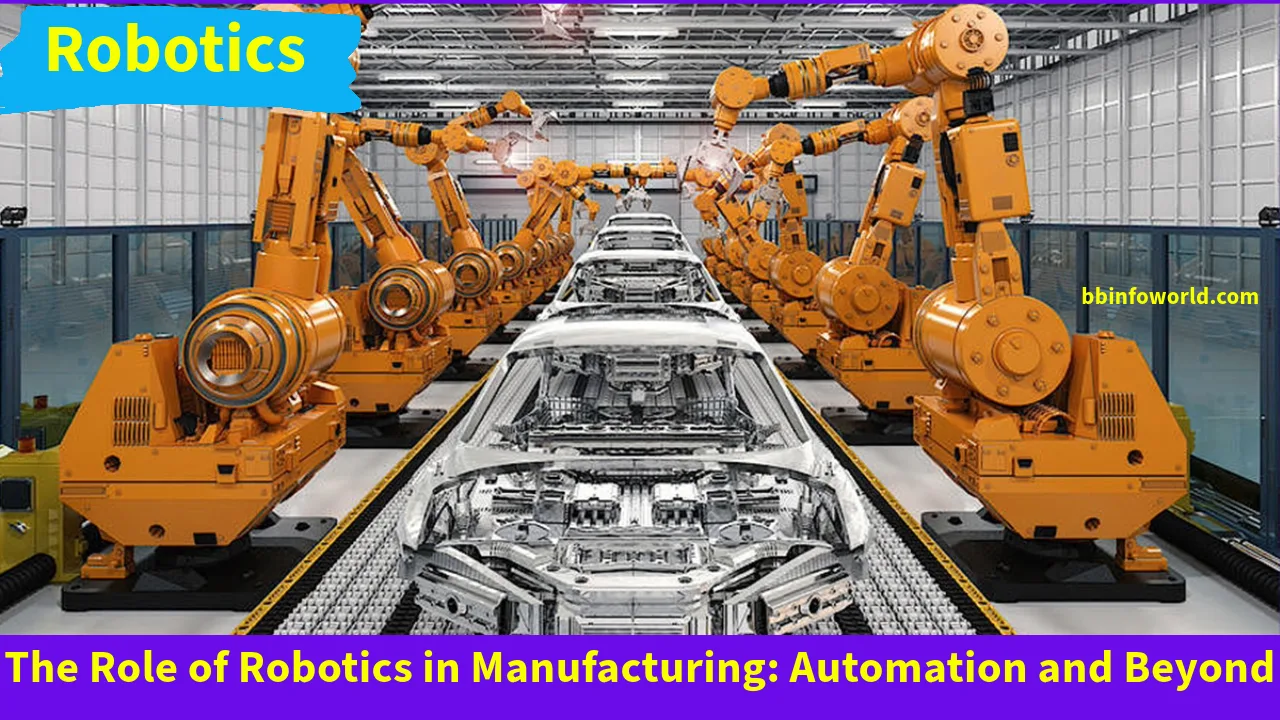
The Role of Robotics in Manufacturing: Automation and Beyond
Introduction:
The manufacturing industry has experienced a significant transformation due to the integration of robotics and automation. What was once a realm of manual labor and repetitive tasks has now evolved into a sophisticated landscape where robots play a pivotal role in enhancing efficiency, accuracy, and production capabilities.
Automation in Manufacturing:
Traditional manufacturing automation involved the use of robots to perform repetitive tasks, such as assembling components, welding, and packaging. These robots are programmed to carry out specific actions with precision, consistency, and speed. Automation led to improved product quality, reduced human error, and increased output.
Advancements in Robotics:
In recent years, robotics technology has advanced significantly, enabling robots to perform complex tasks that require dexterity, adaptability, and decision-making abilities. These robots, often equipped with sensors, cameras, and AI algorithms, can interact with their environment, collaborate with humans, and adapt to changes on the production line.
Benefits of Robotics in Manufacturing:
- Enhanced Productivity: Robots can work tirelessly without breaks, leading to continuous production and increased output.
- Precision and Accuracy: Robotic arms can perform intricate tasks with high precision, reducing defects and waste.
- Improved Safety: Dangerous or hazardous tasks can be assigned to robots, protecting human workers from potential risks.
- Cost Efficiency: Over time, robotic systems can be more cost-effective than manual labor, especially for high-volume production.
- Consistency: Robots ensure consistent quality by executing tasks exactly as programmed, minimizing variations.
Beyond Automation:
While automation remains a core aspect of robotics in manufacturing, the role of robots has expanded beyond routine tasks. Advanced robots are now capable of:
- Collaborative Work: Cobots (collaborative robots) work alongside human workers, assisting with tasks that require human judgment and creativity.
- Flexible Adaptation: Robots equipped with sensors can adapt to changes in the production environment and adjust their actions accordingly.
- Customization: Robots can be programmed to handle various products and adapt to different assembly processes.
- Data Collection: Smart robots gather data during production, contributing to real-time monitoring and optimization.
- Maintenance and Inspection: Robots can perform routine maintenance tasks and inspect products for defects.
Challenges and Considerations:
While the integration of robotics brings numerous benefits, there are challenges to address, including initial setup costs, technical training for employees, and ensuring a smooth human-robot interaction. Additionally, the ethical implications of replacing human jobs with robots need careful consideration.
Future Outlook:
As robotics technology continues to advance, we can expect to see further integration of AI, machine learning, and advanced sensors. The concept of the “smart factory” is gaining traction, where interconnected robots collaborate seamlessly in a highly automated production environment.
Conclusion:
“The Role of Robotics in Manufacturing: Automation and Beyond” showcases how robotics has transcended traditional automation, transforming manufacturing into a dynamic field where robots and humans collaborate to achieve higher levels of productivity, efficiency, and innovation. The journey from basic automation to versatile robotics represents a paradigm shift that holds the potential to reshape the manufacturing industry in profound ways.



